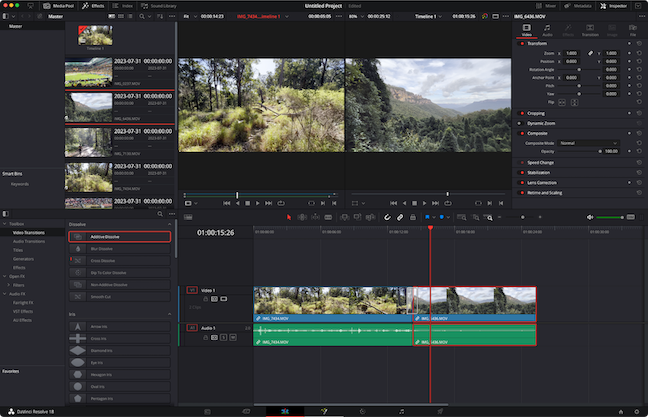Image editing software is used to modify, enhance, and manipulate digital images. It helps improve photo quality and create visual effects.
Image editing software is essential for photographers, graphic designers, and digital artists. These tools allow users to adjust brightness, contrast, and color balance. They also provide options to crop, resize, and remove unwanted elements from photos. Features like layers, masks, and filters enable more complex edits.
Popular programs include Adobe Photoshop, GIMP, and Lightroom. These applications support various file formats and offer advanced functionalities. Effective image editing can significantly enhance the visual appeal of digital content. This makes it a crucial tool in marketing, social media, and professional photography.
Introduction To Image Editing Software
Image editing software helps us change and improve photos. This software is used by both professionals and hobbyists.
With these tools, you can crop, resize, and enhance images. You can also add special effects or remove unwanted elements.
The Evolution Of Digital Photography
Digital photography has changed a lot over the years. Early cameras were big and hard to use.
Now, cameras are small and fit in our phones. Modern cameras take high-quality photos with just a click.
With the rise of digital photos, image editing software became essential. It allows us to fix and improve our photos easily.
Key Features Of Modern Image Editors
Modern image editors have many features. These features make editing photos simple and fun.
- Crop and Resize: Change the size and shape of your photos.
- Filters and Effects: Add different styles and moods to your images.
- Color Correction: Adjust brightness, contrast, and colors.
- Layer Editing: Combine multiple photos and elements.
- Retouching Tools: Remove spots and imperfections.
| Feature | Description |
|---|---|
| Crop and Resize | Change the size and shape of photos |
| Filters and Effects | Add different styles and moods |
| Color Correction | Adjust brightness, contrast, and colors |
| Layer Editing | Combine multiple photos and elements |
| Retouching Tools | Remove spots and imperfections |
These tools make it easy to create amazing images. Image editing software is a must-have for anyone who loves photography.
Types Of Image Editing Software
Image editing software helps enhance and modify digital images. It offers various tools and features. There are different types of image editing software. Understanding these types is important for choosing the right tool.
Raster Graphics Editors
Raster graphics editors work with pixels. They are ideal for detailed photo editing. Common features include:
- Color correction
- Layer manipulation
- Filter application
Popular raster graphics editors include:
| Software | Description |
|---|---|
| Adobe Photoshop | Industry-standard tool for professional image editing. |
| GIMP | Open-source editor with powerful features. |
| Corel PaintShop Pro | Affordable option with robust editing tools. |
Vector Graphics Editors
Vector graphics editors create images using paths. They are perfect for logos and illustrations. Key features include:
- Scalable graphics
- Shape manipulation
- Text integration
Popular vector graphics editors include:
| Software | Description |
|---|---|
| Adobe Illustrator | Top choice for professional vector design. |
| Inkscape | Free and open-source vector editor. |
| CorelDRAW | Versatile tool for graphic design projects. |
Popular Image Editing Software In The Market
Image editing software allows users to enhance and manipulate images. There are several popular tools available for different needs and skill levels. Here are some of the most popular image editing software in the market.
Adobe Photoshop
Adobe Photoshop is one of the most powerful image editing tools. Professionals use it worldwide for various tasks. It offers numerous features for photo editing, graphic design, and digital art.
- Layers: Easily manage different parts of your image.
- Filters: Apply various effects to enhance your photos.
- Brushes: Create and use custom brushes for unique effects.
Adobe Photoshop also supports plugins for added functionality. It is available for both Windows and Mac users.
Gimp
GIMP stands for GNU Image Manipulation Program. It is a free, open-source image editing software. It offers many features similar to Adobe Photoshop.
- Customizable Interface: Tailor the layout to your workflow.
- Photo Enhancement: Tools for fixing and enhancing photos.
- Extensible: Add plugins and extensions for more features.
GIMP is available for Windows, Mac, and Linux users. It is a great choice for those on a budget.
Coreldraw
CorelDRAW is a vector graphics editor. It is popular among graphic designers and illustrators. It offers tools for creating logos, brochures, and other vector-based designs.
- Vector Illustration: Create detailed and scalable graphics.
- Page Layout: Design multi-page documents easily.
- Typography: Advanced text tools for creative designs.
CorelDRAW is available for Windows users. It is known for its user-friendly interface and powerful features.

Credit: www.pcmag.com
Basic Functions Of Image Editing Software
Image editing software offers a range of basic functions. These functions help in enhancing and modifying images. The most common basic functions include cropping and resizing, color correction, and filters and effects. Each of these features plays a crucial role in improving the visual appeal of images.
Cropping And Resizing
Cropping allows you to remove unwanted parts of an image. This helps in focusing on the main subject. You can also change the aspect ratio of the image. Resizing helps you adjust the dimensions of an image. This is useful for web use and social media.
| Feature | Description |
|---|---|
| Cropping | Removes unwanted parts of an image. |
| Resizing | Adjusts the dimensions of an image. |
Color Correction
Color correction involves adjusting the colors of an image. It helps in making the colors look more natural. Common adjustments include brightness, contrast, and saturation. This function is essential for professional photography. It ensures the image looks its best.
- Brightness: Adjusts the lightness or darkness of an image.
- Contrast: Enhances the difference between light and dark areas.
- Saturation: Increases or decreases the intensity of colors.
Filters And Effects
Filters and effects add creative elements to an image. Filters can change the overall look and mood. Effects can add special touches like blur or vignette. These tools are great for social media and personal projects. They make images more engaging and unique.
- Filters: Modify the tone and mood of an image.
- Effects: Add special visual elements like blur or vignette.
Advanced Features In Image Editing
Image editing software has advanced features that enhance creativity. These tools make photo editing more flexible and powerful. Below are some key advanced features you need to know.
Layer Manipulation
Layers allow you to work on different parts of an image separately. You can adjust each layer without affecting others. This feature helps in creating complex designs easily. Layers can be reordered, merged, or hidden. You can also apply different effects to each layer.
- Reorder Layers: Change the position of layers.
- Merge Layers: Combine multiple layers into one.
- Hide Layers: Make layers invisible without deleting them.
Masking Techniques
Masking techniques help in making parts of an image visible or invisible. This is useful for blending images or creating complex compositions. Masks can be applied to layers or individual elements. There are different types of masks like layer masks and clipping masks.
- Layer Masks: Control the transparency of layers.
- Clipping Masks: Use one layer to mask another layer.
3d Modeling
Some image editing software offers 3D modeling features. These features let you create and manipulate 3D objects. You can add textures, lighting, and shadows to make the objects look real. 3D modeling is useful for product design and animation.
| Feature | Description |
|---|---|
| Textures: | Add surface details to 3D objects. |
| Lighting: | Simulate light sources in the 3D environment. |
| Shadows: | Create realistic shadows for 3D objects. |
Credit: www.quora.com
The Role Of Ai In Image Editing
Artificial Intelligence (AI) has revolutionized image editing software. It makes tasks faster and more efficient. AI tools help both beginners and professionals. Let’s explore how AI impacts image editing.
Automated Enhancements
AI tools can enhance images automatically. They adjust brightness, contrast, and color balance. No need for manual tweaking. This saves time and effort.
AI can also remove noise from images. This makes photos clearer. Other tools sharpen blurry pictures. They bring out hidden details.
Some AI tools add special effects. These effects improve the overall look. Users get professional results easily.
| Feature | Benefit |
|---|---|
| Brightness Adjustment | Perfect lighting every time |
| Noise Reduction | Clearer images |
| Special Effects | Professional look |
Smart Selection Tools
AI offers smart selection tools. These tools make it easy to cut out objects. They identify edges and shapes precisely.
One-click background removal is a popular feature. Users can remove backgrounds effortlessly. This is great for creating product images.
Smart selection tools also help with retouching. They fix blemishes and imperfections. The result is flawless photos.
- Edge Detection
- Background Removal
- Blemish Retouching
Overall, AI makes image editing simpler. It offers quick and accurate results. Professionals and beginners both benefit from these tools.
Choosing The Right Image Editing Software
Choosing the right image editing software can make a big difference. The best software helps you create stunning images. But how do you choose the right one? Let’s break it down.
Evaluating Your Needs
First, you need to evaluate your needs. What do you want to do with your images? Do you need basic editing like cropping and resizing? Or do you need advanced features like layers and filters?
- Basic Editing: Cropping, resizing, and color adjustments.
- Advanced Editing: Layers, masks, and special effects.
Knowing your needs helps you choose the right software. If you are a beginner, simple tools are best. If you are a pro, look for advanced features.
Compatibility And System Requirements
Next, check the compatibility and system requirements. Your computer must support the software. Here are some things to check:
| Requirement | Details |
|---|---|
| Operating System | Windows, Mac, or Linux |
| RAM | Minimum 4GB, recommended 8GB |
| Storage | At least 2GB of free space |
| Processor | Dual-core or better |
Make sure your system meets these requirements. If not, the software may not run well. Choose software that works smoothly on your system.

Credit: zapier.com
The Future Of Image Editing
The future of image editing is bright and full of innovation. As technology advances, image editing software continues to evolve. This evolution introduces new tools and techniques for creating stunning visuals. Let’s explore the emerging trends and the impact of virtual reality in this exciting field.
Emerging Trends
Image editing software is constantly improving with new trends. Here are some of the most exciting developments:
- AI and Machine Learning: AI helps automate complex tasks. It makes editing faster and easier.
- Cloud-Based Editing: Edit images online without installing software. Access your projects from anywhere.
- Mobile Editing Apps: Edit high-quality images on your phone. These apps offer many professional features.
The Impact Of Virtual Reality
Virtual Reality (VR) is changing how we edit images. It offers new ways to create and manipulate visuals.
| Feature | Description |
|---|---|
| 3D Image Editing: | Create and edit images in a 3D space. It adds depth and realism. |
| Immersive Workspaces: | Edit images in a virtual environment. It feels like working in a real studio. |
| Interactive Tutorials: | Learn editing techniques through VR tutorials. It makes learning more engaging. |
These advancements make image editing more accessible and fun. The future of image editing is here, and it’s exciting!
Frequently Asked Questions
What Software Is Used For Image Editing?
Popular image editing software includes Adobe Photoshop, GIMP, CorelDRAW, and Canva. These tools offer various features for editing.
What Do You Mean By Image Editing Software?
Image editing software allows users to alter, enhance, and manipulate photos. It includes tools for cropping, retouching, and color correction.
Is Photoshop Is An Image Editing Software?
Yes, Photoshop is an image editing software. It allows users to create, edit, and enhance digital images.
What Is Used For Photo Editing?
Photo editing is done using software like Adobe Photoshop, Lightroom, GIMP, and mobile apps like Snapseed.
Conclusion
Image editing software is essential for enhancing photos and creating stunning visuals. It helps professionals and hobbyists alike. With various tools and features, it meets diverse needs. Explore different software options to find the best fit for your projects. Improve your images and make them stand out effortlessly.





